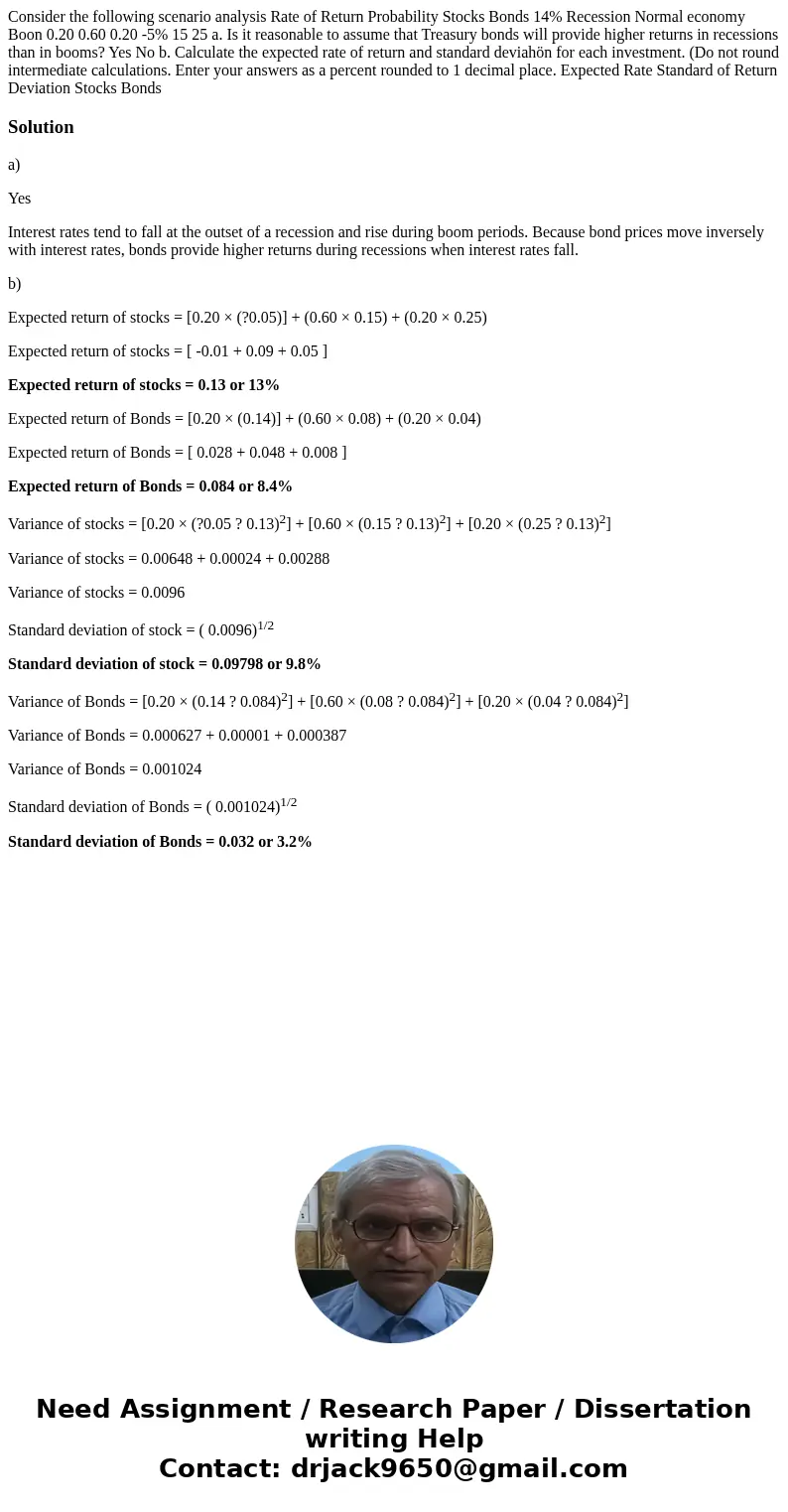Consider the following scenario analysis Rate of Return Prob
Solution
a)
Yes
Interest rates tend to fall at the outset of a recession and rise during boom periods. Because bond prices move inversely with interest rates, bonds provide higher returns during recessions when interest rates fall.
b)
Expected return of stocks = [0.20 × (?0.05)] + (0.60 × 0.15) + (0.20 × 0.25)
Expected return of stocks = [ -0.01 + 0.09 + 0.05 ]
Expected return of stocks = 0.13 or 13%
Expected return of Bonds = [0.20 × (0.14)] + (0.60 × 0.08) + (0.20 × 0.04)
Expected return of Bonds = [ 0.028 + 0.048 + 0.008 ]
Expected return of Bonds = 0.084 or 8.4%
Variance of stocks = [0.20 × (?0.05 ? 0.13)2] + [0.60 × (0.15 ? 0.13)2] + [0.20 × (0.25 ? 0.13)2]
Variance of stocks = 0.00648 + 0.00024 + 0.00288
Variance of stocks = 0.0096
Standard deviation of stock = ( 0.0096)1/2
Standard deviation of stock = 0.09798 or 9.8%
Variance of Bonds = [0.20 × (0.14 ? 0.084)2] + [0.60 × (0.08 ? 0.084)2] + [0.20 × (0.04 ? 0.084)2]
Variance of Bonds = 0.000627 + 0.00001 + 0.000387
Variance of Bonds = 0.001024
Standard deviation of Bonds = ( 0.001024)1/2
Standard deviation of Bonds = 0.032 or 3.2%

 Homework Sourse
Homework Sourse